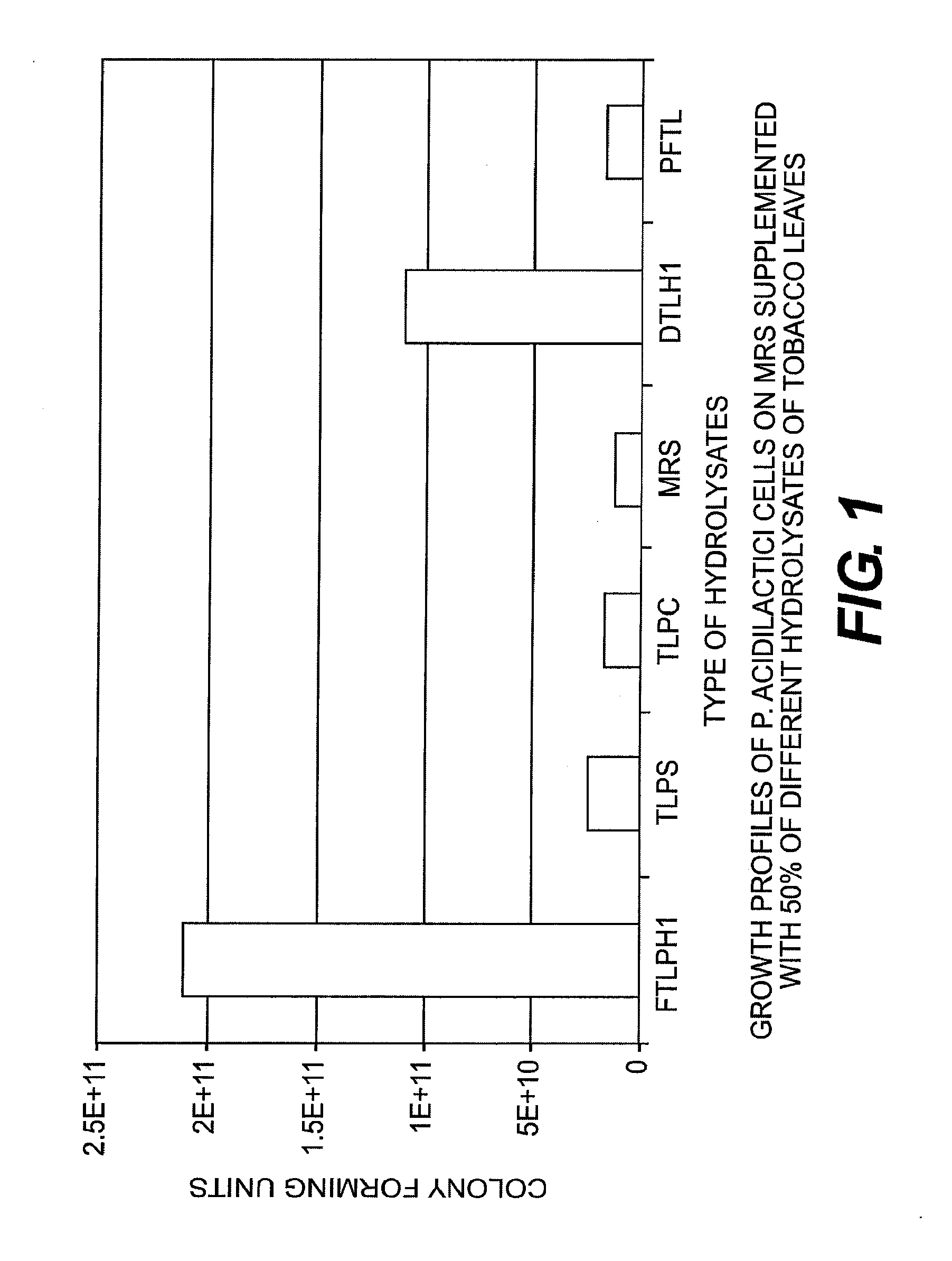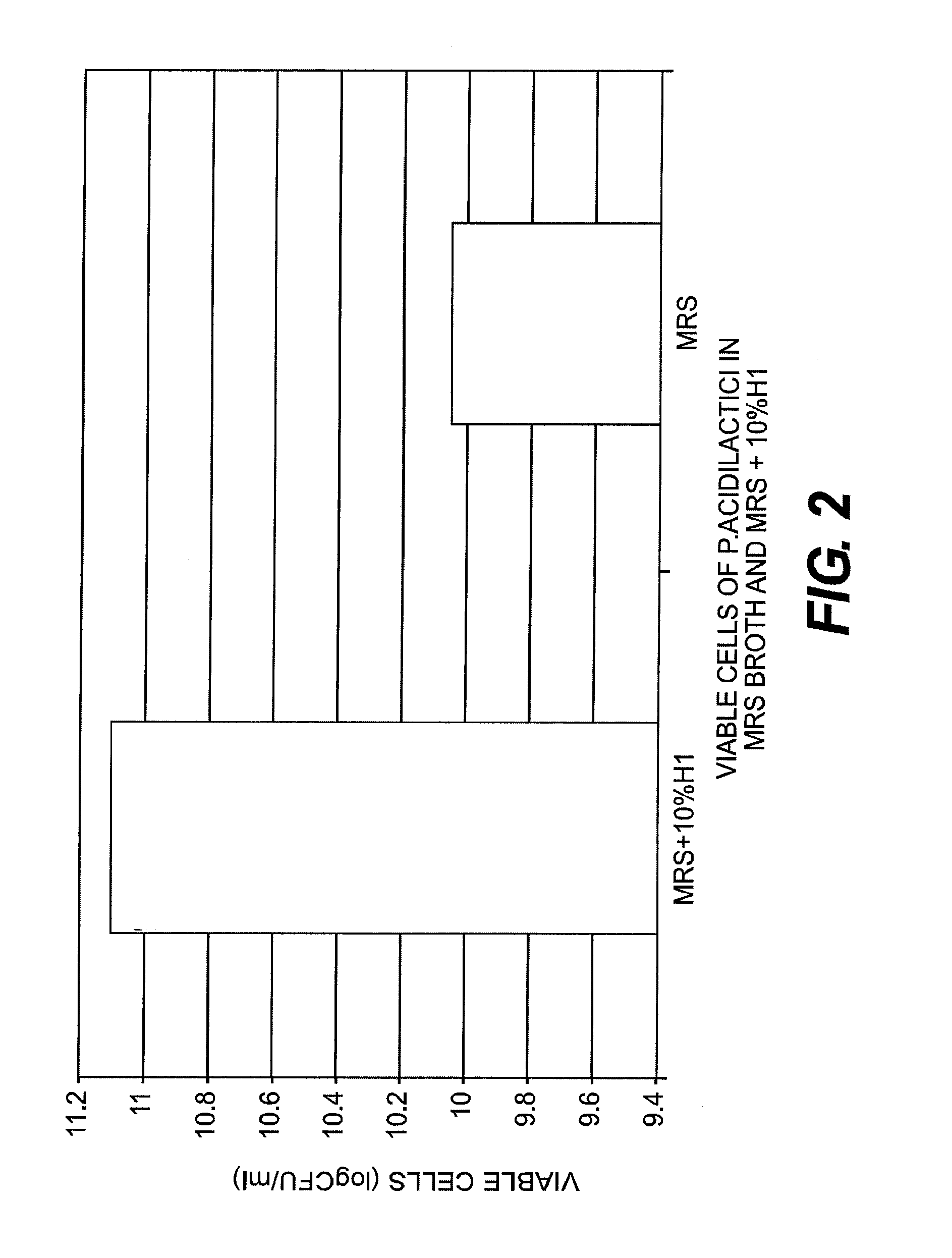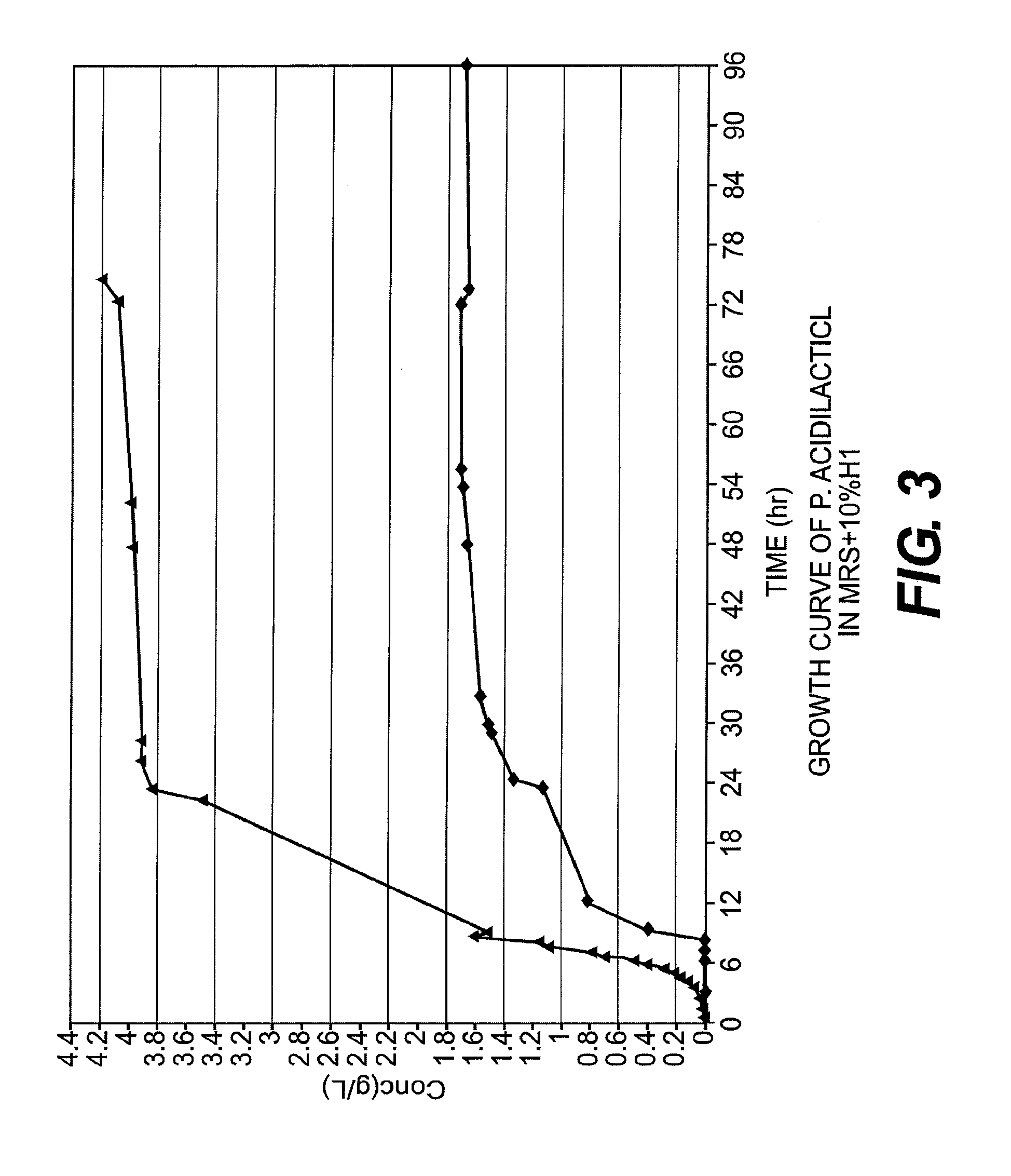Novel Composition of Matter and Method for Stimulating the Growth of Beneficial Microorganisms
a technology of beneficial microorganisms and compositions, applied in separation processes, solvent extraction, transportation and packaging, etc., can solve the problems of high cost of existing fermentation substrates, biobased production of these chemicals, and high cost of fermentation substrates
- Summary
- Abstract
- Description
- Claims
- Application Information
AI Technical Summary
Benefits of technology
Problems solved by technology
Method used
Image
Examples
example 1
[0054]Comparison of different tobacco leaf biomass fractions with a standard microbial growth promoter in promoting bacterial growth
[0055]The purpose of this experiment was to assess the effect of different tobacco leaf biomass and protein fractions in promoting the growth of a beneficial probiotic bacterial species. The different fractions were compared with a standard commercial growth medium for promoting probiotic acid bacterial growth.
[0056]The analyses utilized the probiotic bacterial species, Pediococcus acidilactici, which is contained in several commercial probiotic feeds and which has been recovered from a wide range of animal species. The analyses utilized materials obtained from plants of the low-alkaloid tobacco variety MD 609LA. All samples involved materials which had been harvested from tobacco plants in their green, vegetative state.
[0057]The test compared five treatments:
[0058]Treatment 1: (“FTLPH1”): a hydrolysate containing fresh, sterilized tobacco leaves prepar...
example 2
[0078]Comparison of TLBH and MRS
[0079]The inventors conducted a follow-up test involving only TLBH and MRS. In this experiment, the inventors followed the leaf protein recovery process as described in Treatment 4 of Example 1 above, and as above, they selected the biomass fraction for this study. They then oven-dried the biomass at 55° C. for 40 hours. Ten (10) grams of dried leaves were then placed in a 250 ml beaker containing 200 ml of distilled water and heated in a water bath at 85° C. for 1 hr. The hydrolysate was filtered through a Whatman No 1 filter paper and then cooled to room temperature prior to use.
[0080]P. acidilactici cells were inoculated into a control containing MRS broth and into a treatment in which 10% of the MRS had been replaced by TLBH on a v / v basis (i.e., a 10:90 TLBH:MRS treatment). Cells of both treatments were incubated for 24 hours, at 37° C., and then a cell count was taken at 24 hours.
[0081]The sample containing 10% TLBH showed a dramatic yield incre...
example 3
[0082]Production of Organic Acids
[0083]The inventors found that LBH when used as a substrate rapidly produces large volumes of organic acids. The inventors found a dramatic increase in the concentration of several organic acids during anaerobic fermentation conditions when the lactic acid bacterial species P. acidilactici was given a TLBH substrate prepared using the method of Example 2 above, including lactic acid, propionic acid and acetic acid. This result indicates that LBH is a useful substrate in the production of organic acids. For all three organic acids analyzed, these results indicated that the P. acidilactici cells were utilizing the growth medium containing LBH metabolically.
[0084]The results for lactic acid production are particularly noteworthy and unexpected. Commercial production of lactic acid using bacterial fermentation is limited due to the difficulties and expense of culturing lactic acid-producing bacteria under anaerobic conditions. The fact that a lactic acid...
PUM
 Login to View More
Login to View More Abstract
Description
Claims
Application Information
 Login to View More
Login to View More - R&D
- Intellectual Property
- Life Sciences
- Materials
- Tech Scout
- Unparalleled Data Quality
- Higher Quality Content
- 60% Fewer Hallucinations
Browse by: Latest US Patents, China's latest patents, Technical Efficacy Thesaurus, Application Domain, Technology Topic, Popular Technical Reports.
© 2025 PatSnap. All rights reserved.Legal|Privacy policy|Modern Slavery Act Transparency Statement|Sitemap|About US| Contact US: help@patsnap.com



